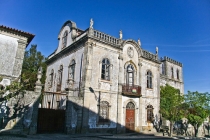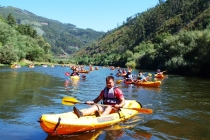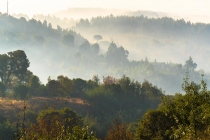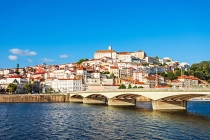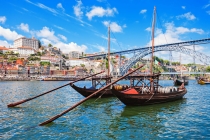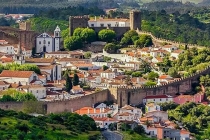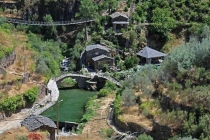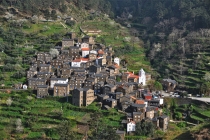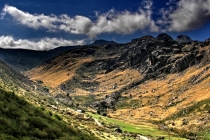Op stap ENG
To towns and cities
Walks to nearby villages
It is only a 10-minute walk to Casal da Senhora, one of those typical towns with a small chapel and a pillory from days long gone on their quiet town square, where a few ancient streets dream and for many time has stood still.
Only 15 minutes further is Midões, a town of which the oldest part with its beautiful gables and terraces date back to a past that was important for the region. There are a few shops, a medical care service and pharmacy, a post office and a bank (with an ATM).
Local markets
There are markets in Oliveira do Hospital, Carregal do Sal and Tábua, some are open weekly and others alternate.
Picture a grass or sandy square with a maze of stalls and merchandise, smoking charcoal fires with chicken, bacon, ham or fish on the grill. Beer and wine and abundant Portuguese families in their best clothes. An event we would recommend to all our guests. The markets may be diminishing in number and size, there are still plenty of lively, colourful markets in Portugal.
Going on an adventure
Hiking trails that start elsewhere
Enthusiastic hikers can also reach the foothills of the artificial lake of the Rio Mondego, only three kilometers away as the crow flies.
The range of “Hikes in the vicinity of the Quinta da Cerca” embrace an interesting natural setting, all with their departure point within 5 kilometers of the Quinta. Cars can be left there.
Active adventure
Horse riding: guided tours from Midões www.portugalbyhorse.com. Rental of mountain bikes.
Kayaking on the artificial lake of the Mondego www.rockandriver.com.pt. Rock climbing.
Kayaking: departure from the Mondego, from Penacova to Coimbra www.opioneirodomondego.com.
Cycling and mountain biking: www.quintadoriodao.com.
Guided hikes: http://wandelen-portugal-bergen.blogs.sapo.pt
Others
Yoga
Bird spotting
Day trips
With its central location between the ocean and the mountains and between Portugal’s main cities, Lisboa and Porto, Quinta de Cerca is a perfect base camp to get to know the country and its culture.
A day at sea
Figueira da Foz, a seaside town famous for its broad beach, where you will mainly see Portuguese tourists. The fishermen’s towns of Mira and the smaller Tocha, surrounded by many kilometers of abandoned beaches, dunes and pine forests. The locals still practice trawl fishery from the beach here. Slightly further to the south, you will find a combination of sandy bays and rock formations. Important tourist spots are Nazaré, San Pedro de Moel and San Martinho do Porto. In the north you will find Aveiro.
City and cultural heritage
A visit to Porto or a walk through the well-preserved medieval city of Obidos are highly recommended.
You do not need to go that far, however, to find cultural and historical sights: there are pleasant cities like Coimbra and Viseu, or smaller towns like Tomar en Alcobaça.
Conimbriga is an archeological site that gets bigger every year. The beautiful Roman mosaics are beautifully preserved. Buçaco Forest, a large national park guarding unique exotic trees and a Royal Seat in neo-Manueline style. A whole range of fortified areas, forts and (walled) villages that this region is known for and that were recently crowned “the historical villages of Portugal”.
Mountain hikes
Even closer and definitely worth a visit are the surrounding mountains. It’s remarkable how different they are. The landscape goes through a rapid change as you walk further. Rolling hills make way for steep terracing; granite changes over into slate; wooded slopes become steep rock formations and bare mountain ridges. Still you will see villages arise in the most unlikely of places. Just an hour’s
Serra da Estrela …
Is the highest mountain range of the Portuguese mainland. It is vast and has many beautiful views. Above the tree line the landscape mostly consists of granite, and glacial valleys from the ice ages. The last snow melts around the end of May.
De Serra do Caramulo …
Offers spectacular vistas, with incredible granite rock formations spread around the landscape of lovely green meadows.
De serra do Açor…
Is a limestone mountain range, cut by deep valleys with a network of irrigation channels that spans across many kilometers. Piódao is one of the most authentic mountain villages in Portugal.
De Serra da Lousã …
Is a slightly lower mountain range that can be explored from the city of the same name, Lousã. There are also small limestone villages, mostly abandoned. You will explore three of them during one of the guided walks.

